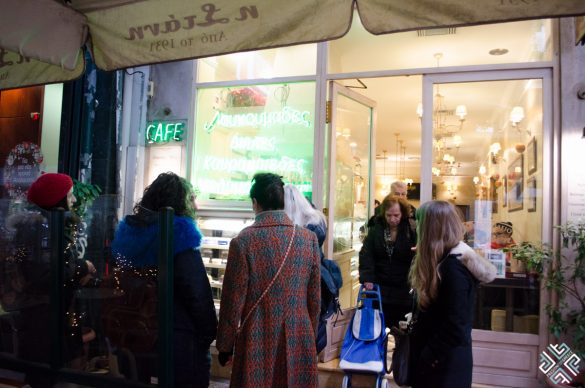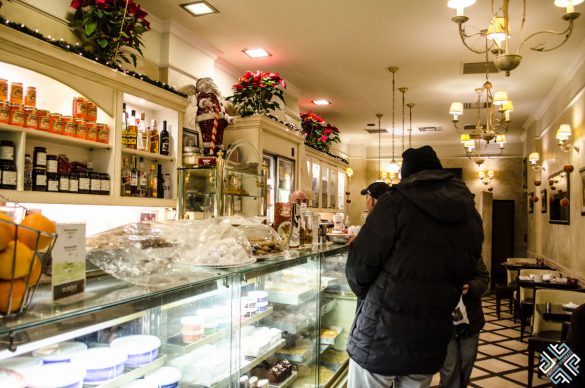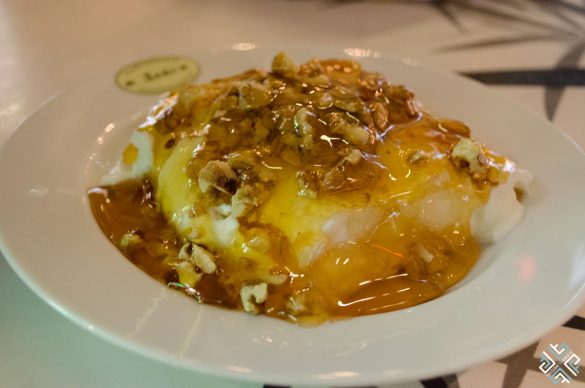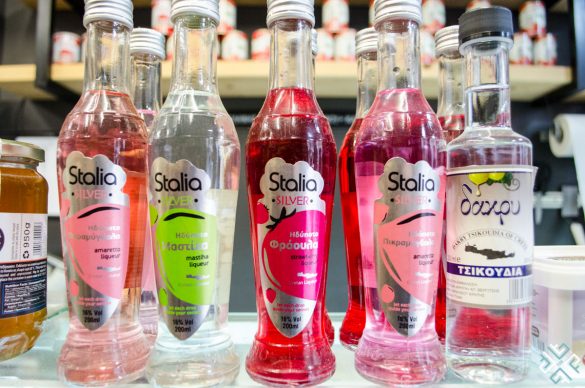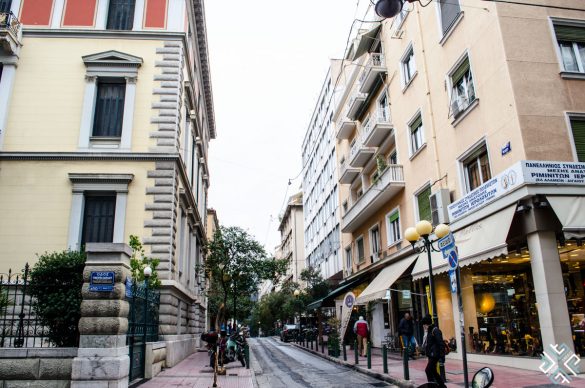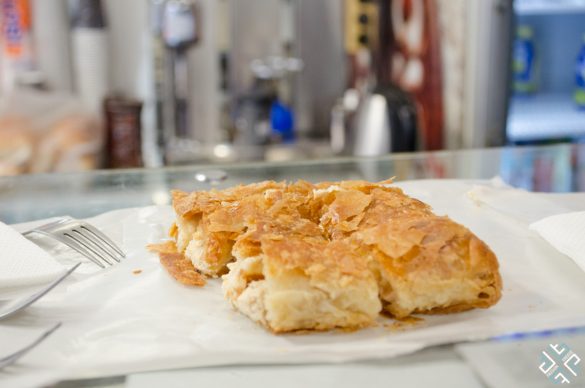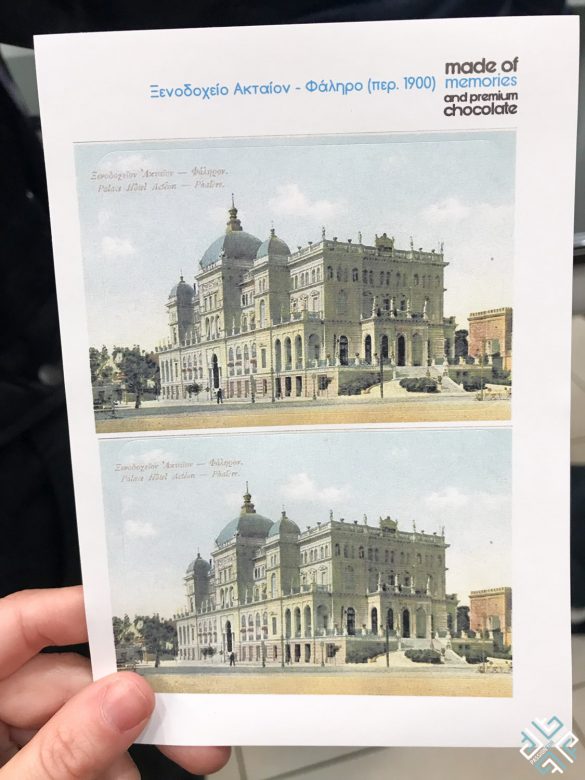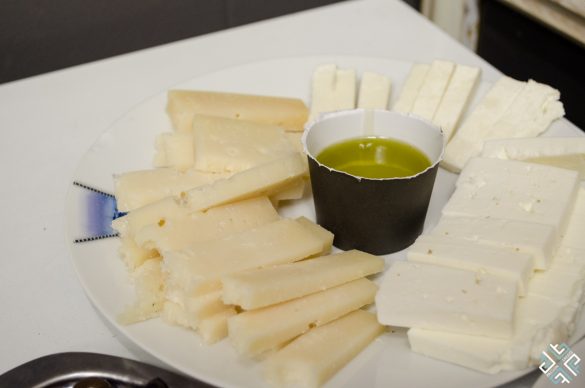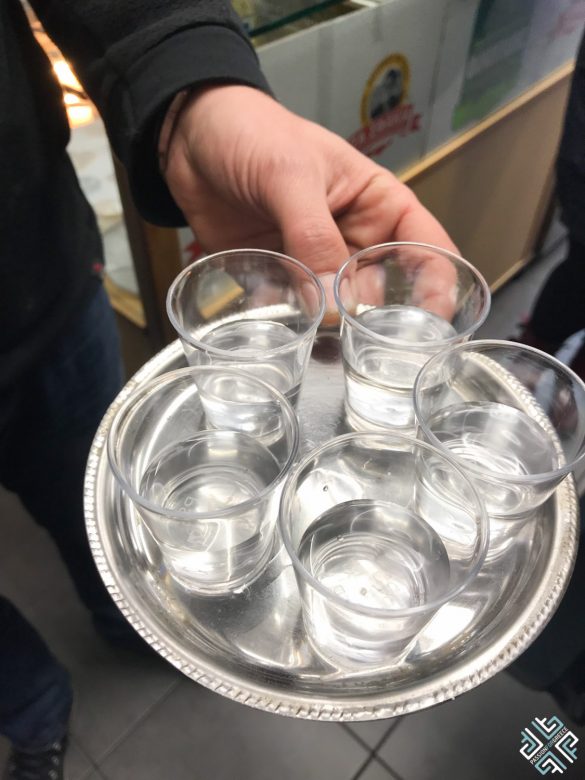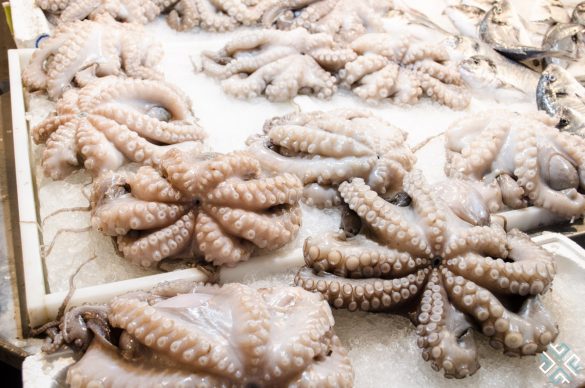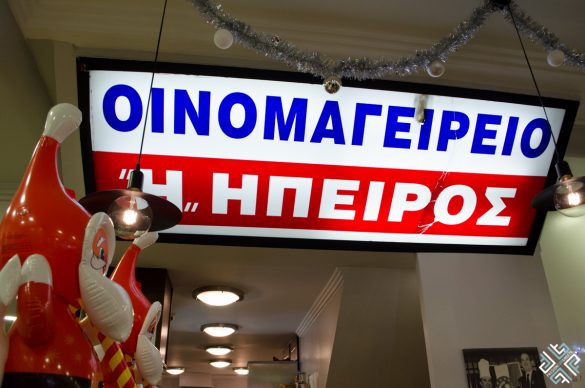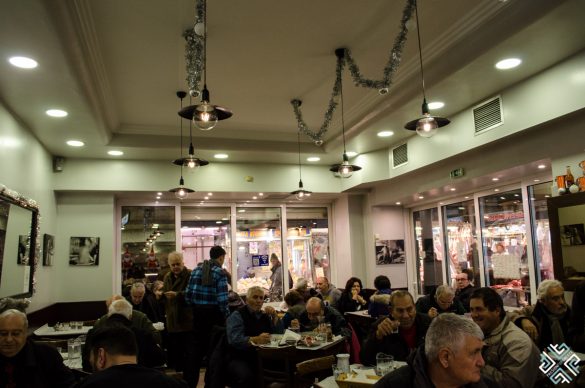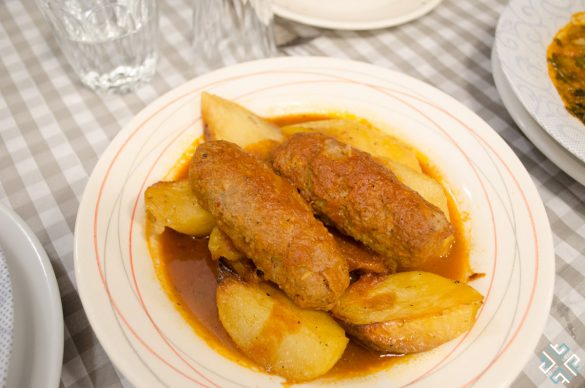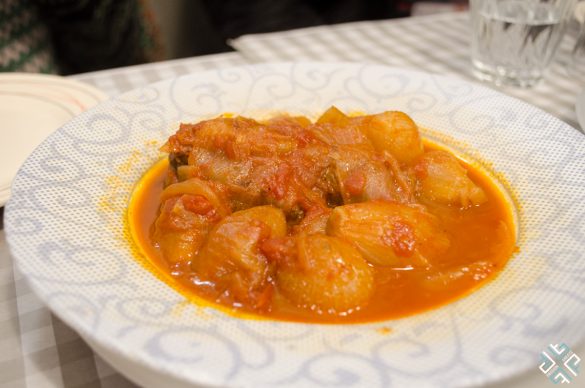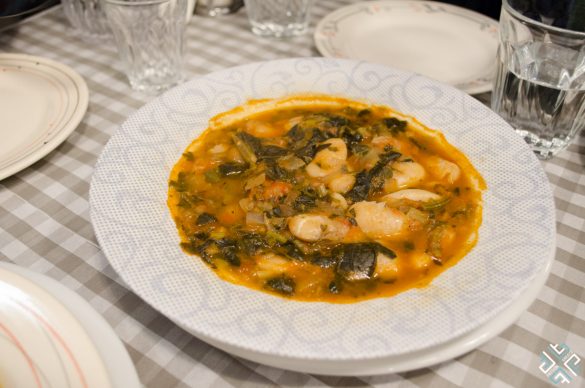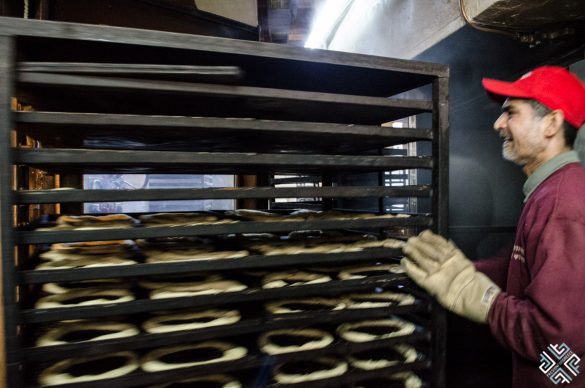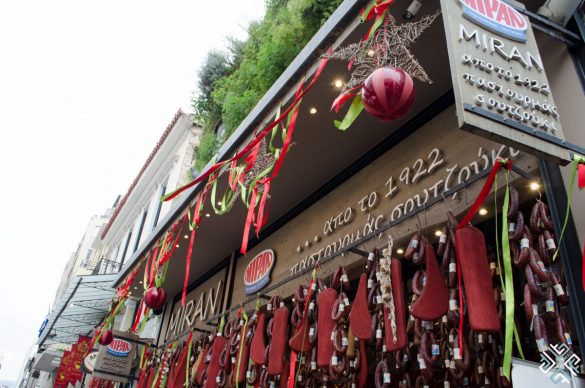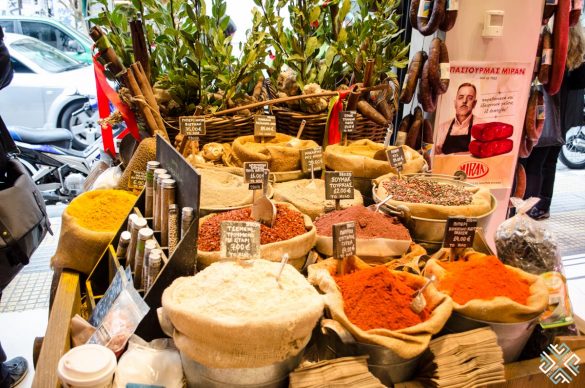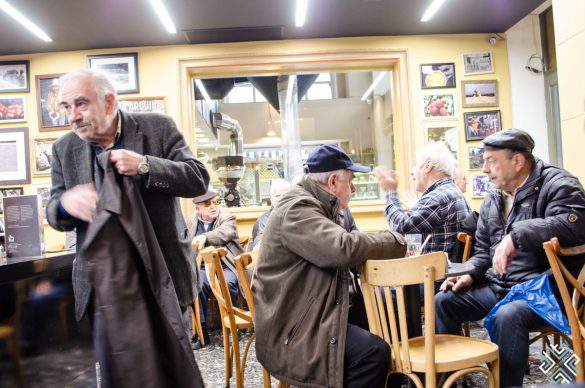One of the best ways to discover a city is through the stomach. Even in the colder months of the year, Athens is a mecca for foodies. One morning just before the holidays together with a few of my friends of Travel Bloggers Greece, we joined the Ultimate Tour offered by Athens Food on Foot to savour some of the best traditional Greek dishes.

Ultimate Tour by Athens Food on Foot Tour
Our meeting point was at Omonia Square from where we followed our guide Averkios through the back streets of Athens’ historical centre. The first stop was at one of the oldest sweet shops which operates since 1931.
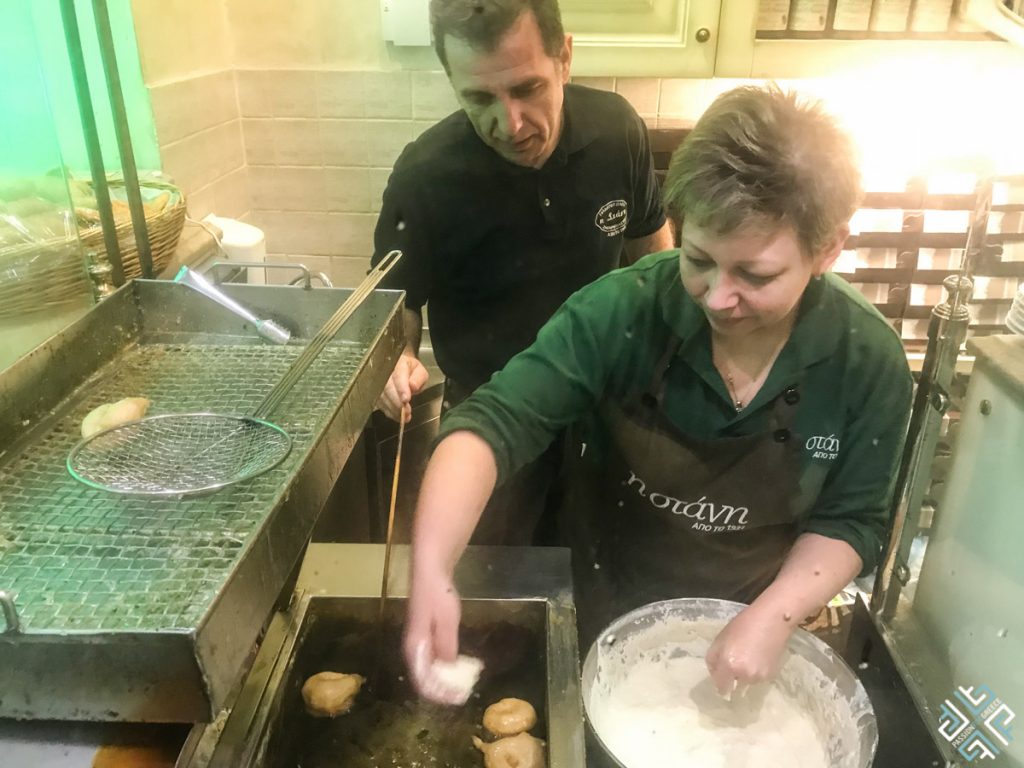
The process of frying loukoumades
We tried the traditional Greek yogurt served with honey and walnuts as well as loukoumades which are the Greek version of donuts soaked in hot honey syrup and sprinkled with cinnamon. They usually come in different sizes, some shops serve them in a smaller size.
We then walked down the Panepistimiou Street which is one of the most famous streets in Athens that connects Syntagma Square with Omonia Square. It houses some of Athens most impressive historical buildings like the Athens Academy and the National Library.

As we turned onto one of the side streets we headed towards a small corner bakery where we tried a custard pie called bougatsa which is usually served for breakfast and is made with phyllo dough. The filling is a mix of cream and cheese, best enjoyed when warm.
After the first two sweet stops next on the itinerary was a visit to the Stoa Nikoloudi, a covered walkway which connects Panepistimiou Street with Stadiou Street.
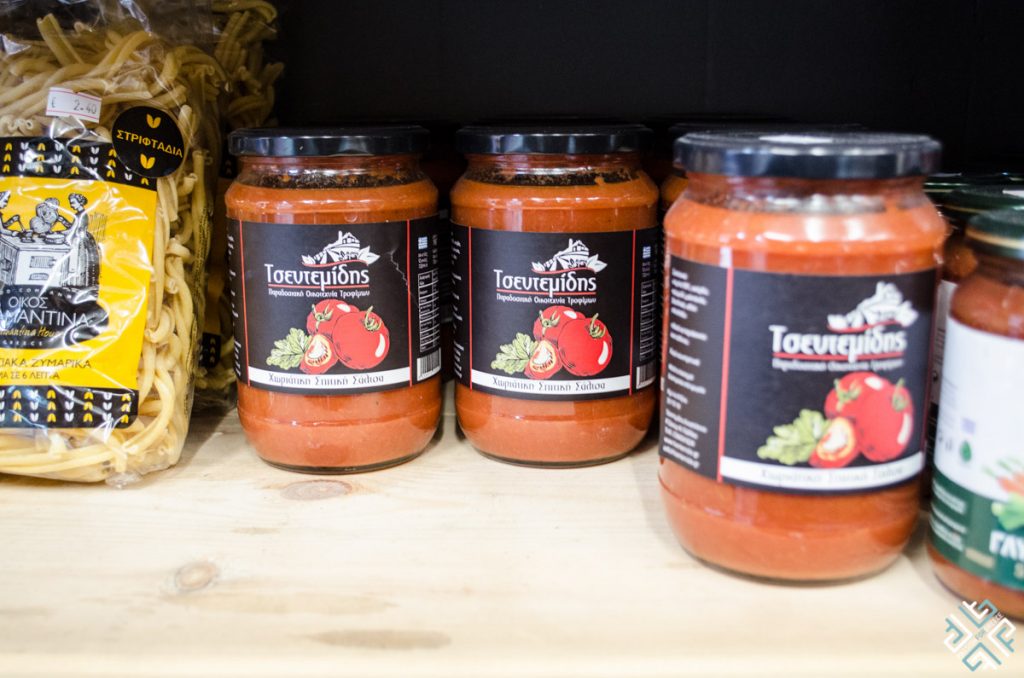
One of the most renowned porticos of Athens was beautifully decorated for the holidays. Inside the walkway there is a unique sweet shop called Chocotopia which sells delicious handmade chocolates and ice cream.
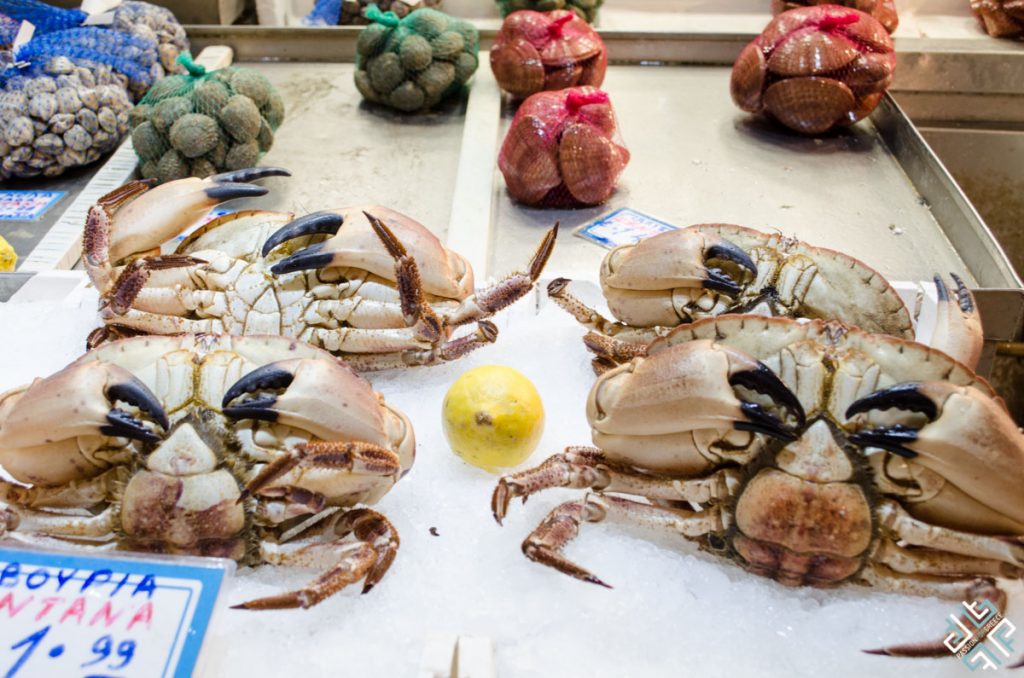
The ice cream is prepared on the spot using your own ingredients of choice based on the traditional Greek recipes. You can add fresh berries, orange zest and other fruits.
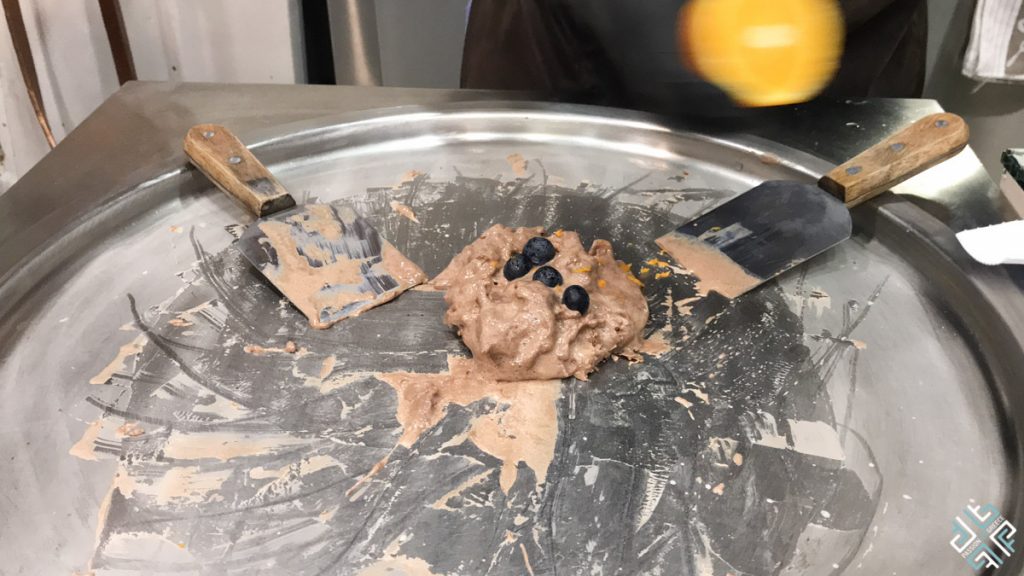
No Greek meal is ever complete without the Cretan products. Crete is known for its unique cuisine and the healthiest ingredients. In a small shop we tried different types of olives, bread rusks which we dipped into extra virgin olive oil and the famous Cretan graviera cheese.
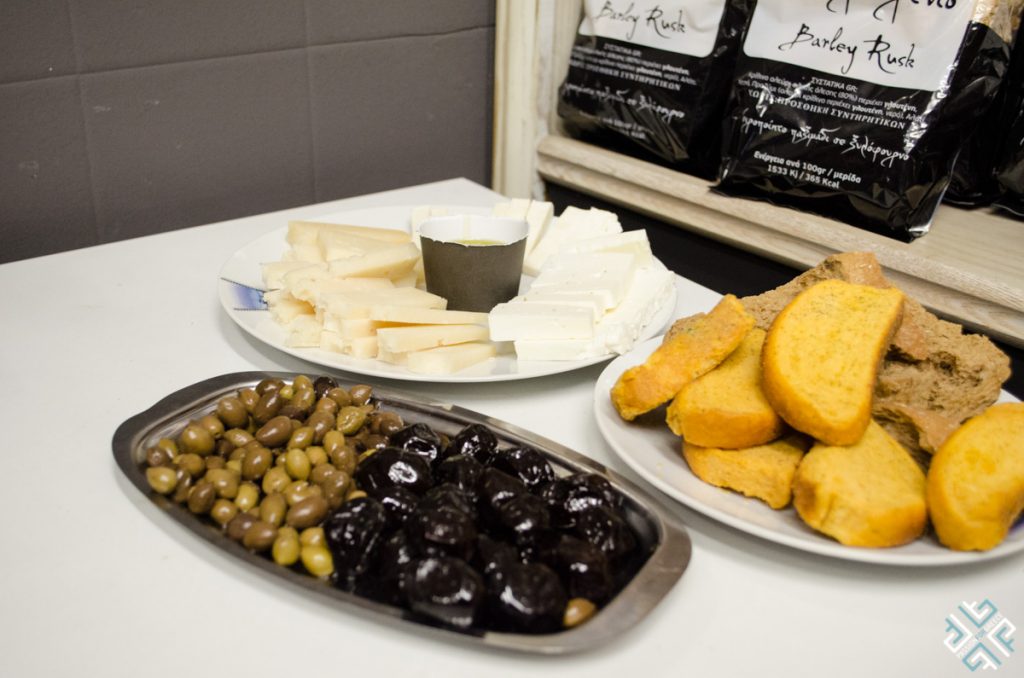
On the island of Crete the cheese is either served as a meze, main appetiser or dessert. It is often topped with honey for a sweet taste.
Last but not least the most important ingredient of the whole Cretan feast is a strong alcoholic beverage known as raki. The drink plays a crucial role in the Cretan culture. When offered a raki you cannot deny drinking it up as it is simply impolite to refuse.
After trying all the delights it was time for a coffee break — a very important part of getting to experience the Greek culture. The Greeks are heavy coffee drinkers which is not just a habit but an actual tradition.

This daily ritual is best enjoyed with friends while reading your daily paper and engaging in small talk. In the heart of Athinas Street there is a coffee shop which serves the traditional Greek coffee prepared in a briki, a small brass or copper pot with a long handle.
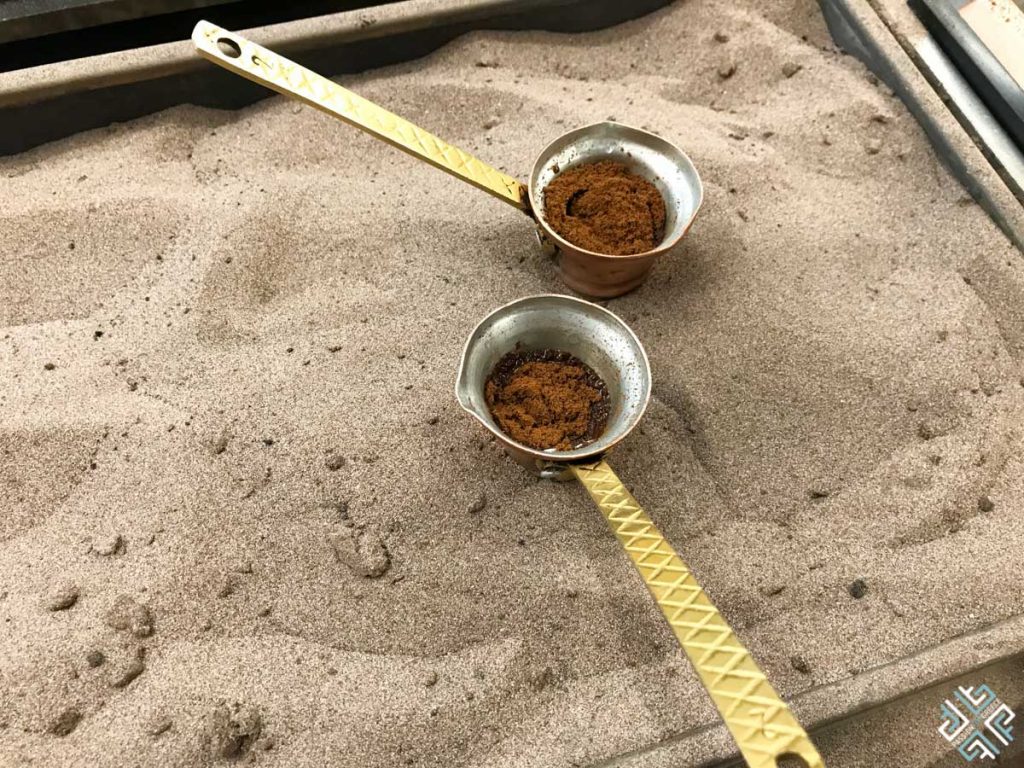
This particular coffee shop uses the hovoli method, where the briki is placed on a sand filled tray set over hot coals. The secret lies in the slow cooking process, while you wait for the foam to slowly rise — once it does it is ready to be enjoyed.
After our coffee break we went across inside Athens’ oldest markets — the Varvakios Agora, a vibrant square in the heart of Athens. Here you will find anything from spices, fruits, vegetables, fresh fish and meat.
A bustling market full of people and aromas, it houses one of the most famous local restaurants which serves the traditional patsa soup that is best enjoyed after a late night out. We did not have the soup, but tried their home cooked dishes known as the magirefta. We tried the butter beans, beef stiffado, and soutzoukakia which are meatballs cooked in a rich tomato sauce.
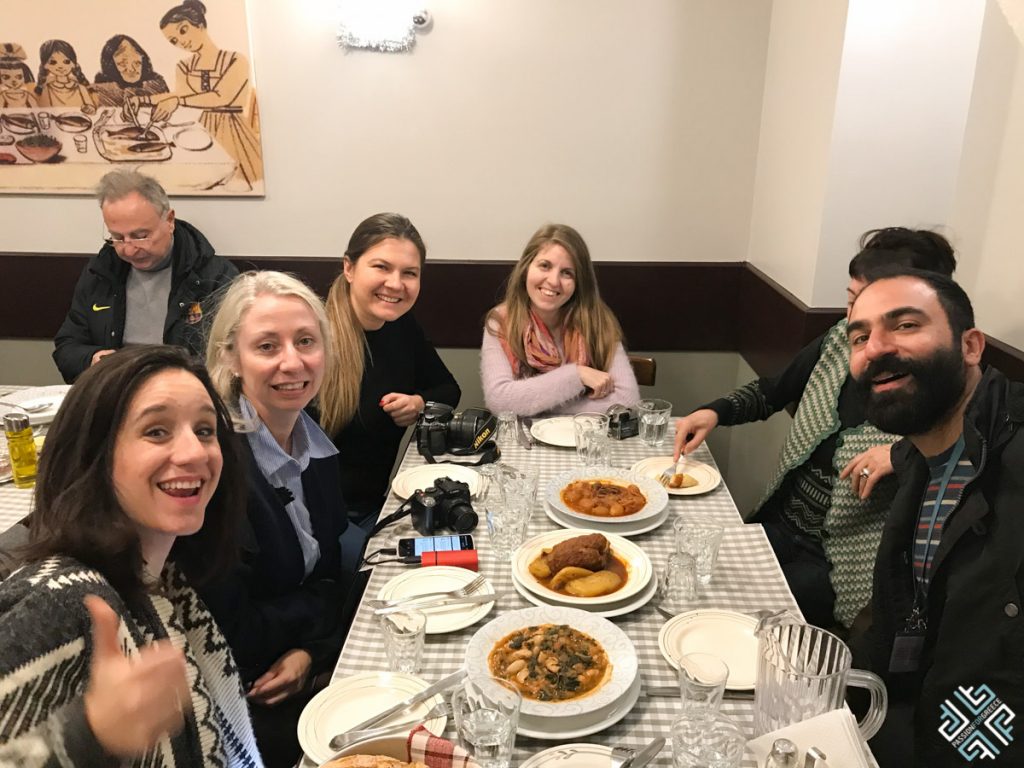
After a hearty warm meal we continued our Athens Food on Foot Tour and went to try the koulouri the famous Greek breakfast item enjoyed on the go. This bread ring which is covered with toasted sesame seeds is one of the most popular street foods that can be found everywhere in Greece.
You can often see older men with small stalls or braided baskets selling these bread rings on the streets of Athens. The Koulouri of Psyrri is one of the most popular shops where you can buy this chewy bread ring.

The next stop was at Miran, famed for its pastourma — a shop which has been operating since 1922. Characterised by the hanging sausages which decorate the ceiling of the shop, this place is always packed with people.
We sat inside to try the renowned pastourma, air-dried cured beef, pastrami which is a dried meat seasoned with spices, dolma made out of vine leaves, goat cheese and rusks.
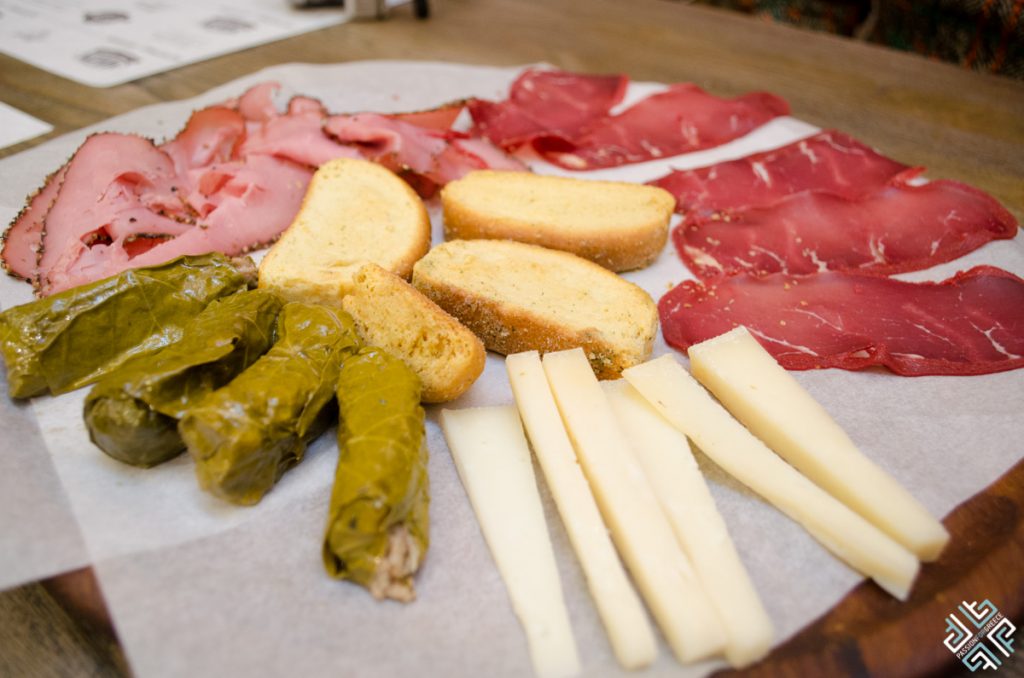
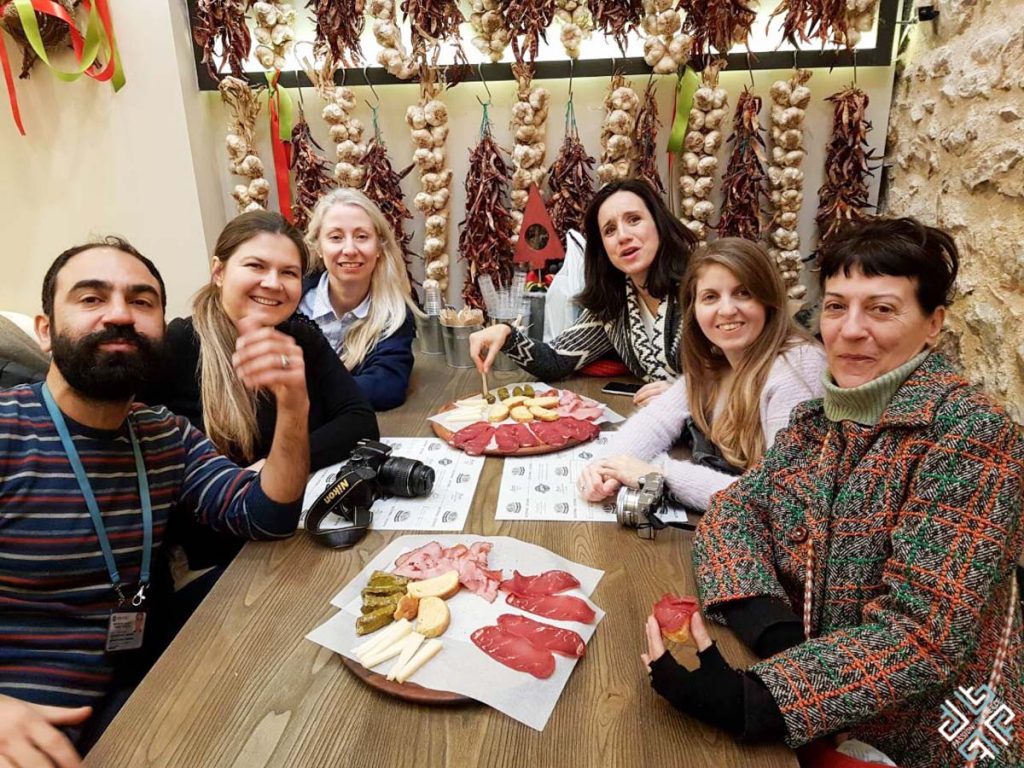
The second last stop was to try Greek olives. We ended our tour at a small meze place that has a few tables set outside where we drank tsipouro accompanied by various nibbles.
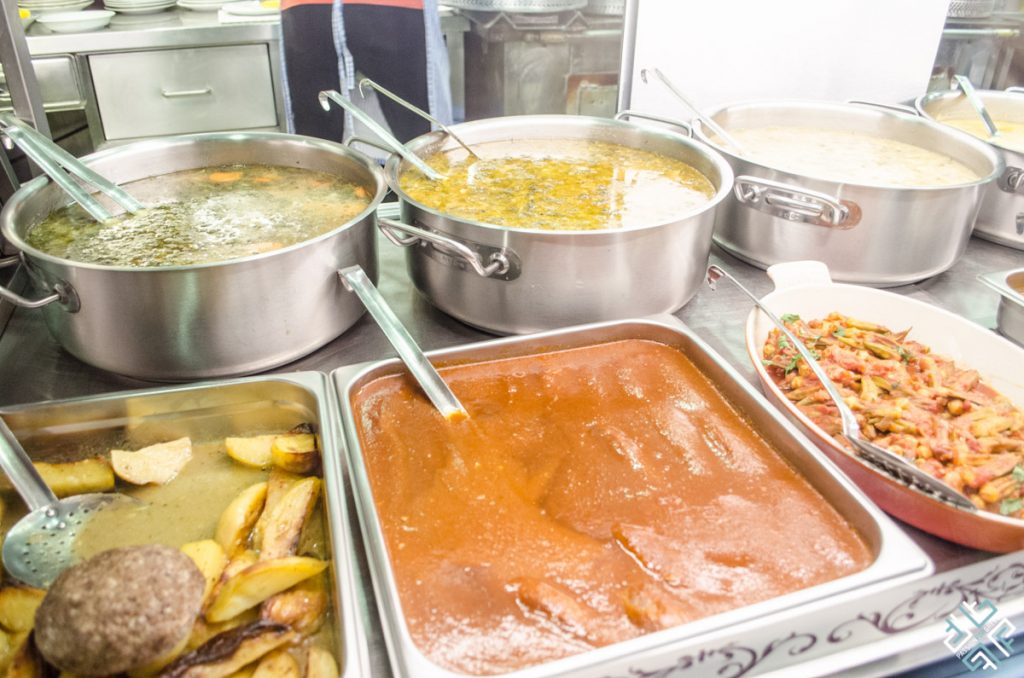
The platter had a spicy cheese dip, potatoes, hot meatballs and meat. Tsipouro is a popular strong alcoholic beverage made out of pomace and is commonly enjoyed in the regions of Thessaly, Macedonia, Epirus and Crete.
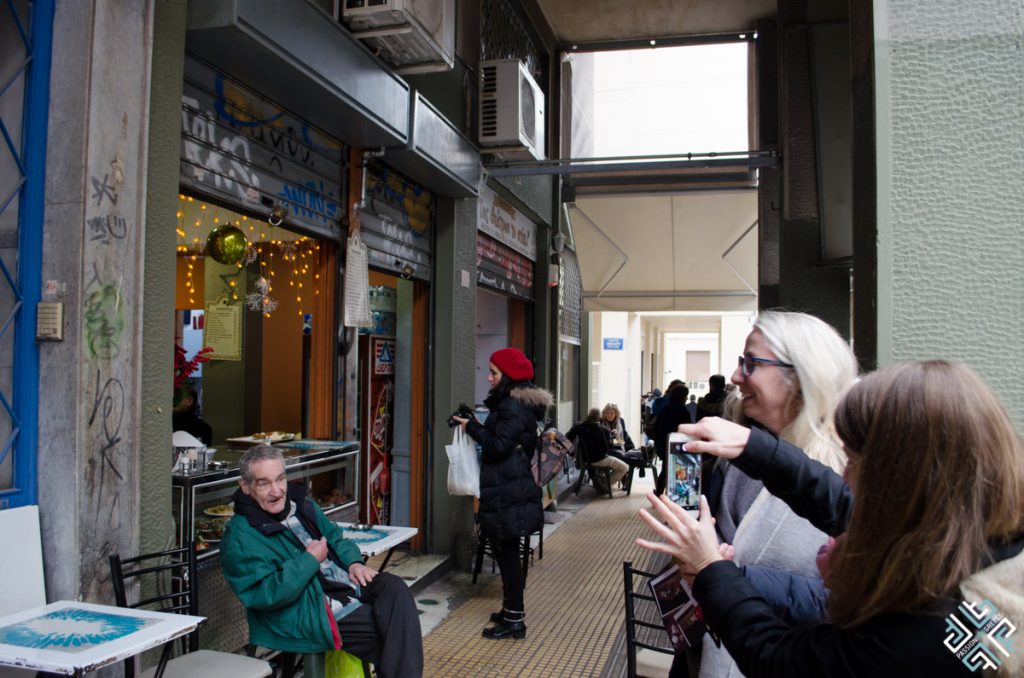
During our four hour Ultimate food tour we learned all about the Greek food culture and history. We savoured dishes which have been passed on from one generation to another.
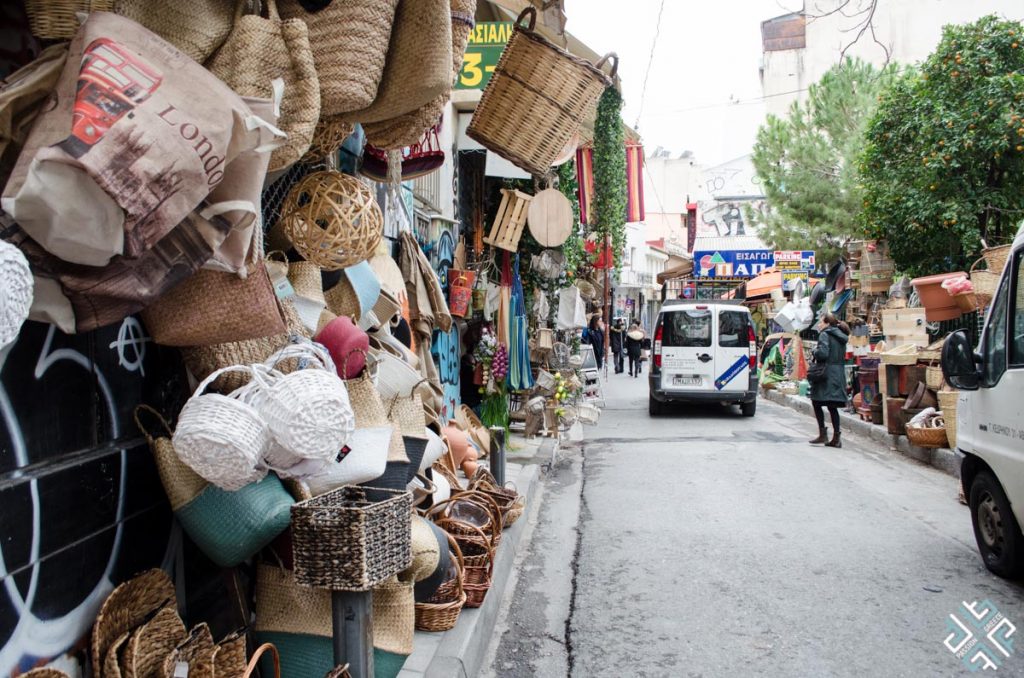
For Greeks food is not only a source of life but also a part of a larger experience which is best enjoyed in the company of good friends and family. If you want to fully immerse yourself in Greek culture, a food tour is a great way to learn all about the history and culture of Greece and how it has developed over the centuries.
Contact Details
Tour duration: 4 hours
Cost of tour: €74
Tel: +306979110469


